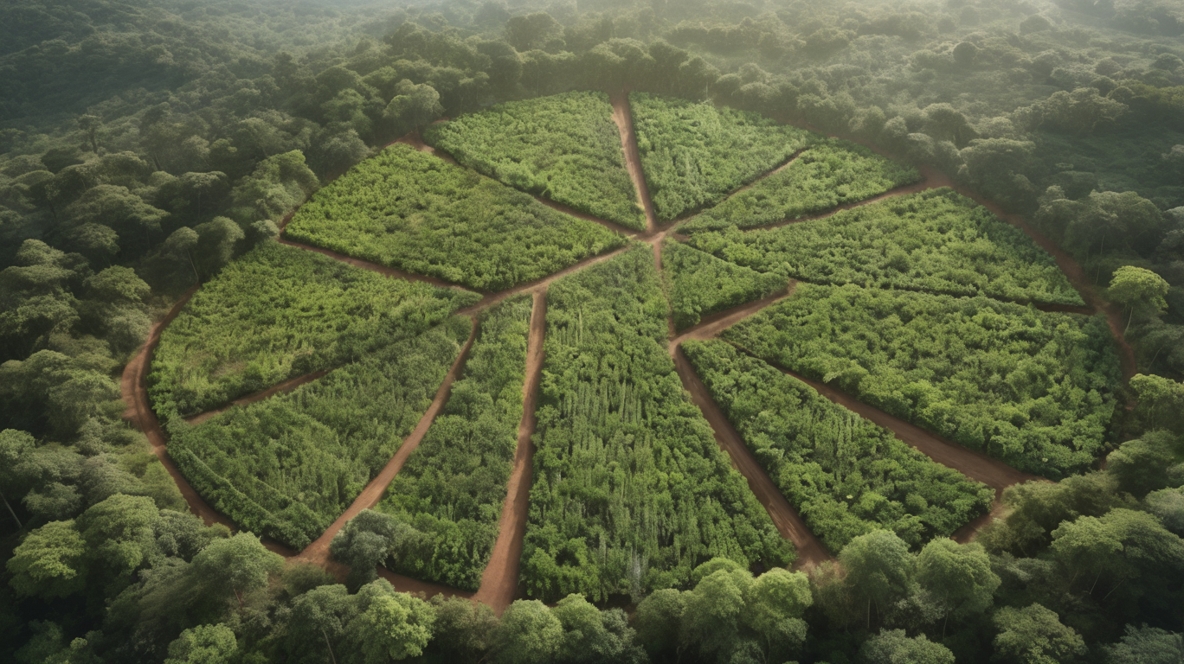Imagine a forest where trees, crops, and livestock thrive together, working in harmony to produce food, restore soil, and support biodiversity. This isn’t a vision for the future—it’s an ancient practice reshaped for modern needs. Sustainable agroforestry is proving to be one of the most effective ways to make the most of available land without depleting resources. By integrating trees and shrubs with agriculture, farmers create self-sustaining systems that regenerate the soil, reduce reliance on chemicals, and improve long-term productivity.
The Core Principles of Sustainable Agroforestry
Every agroforestry system follows a few fundamental principles that make it work. It’s not just about planting trees near crops; it’s about designing a system where each element supports the others.
Diversification for Resilience
Monoculture farming exhausts the soil and leaves farmers vulnerable to pests and diseases. Agroforestry counters this by introducing a variety of plants and animals that create a balanced ecosystem. Trees provide shade and wind protection, while crops benefit from improved moisture retention. Livestock, in turn, fertilize the soil naturally. The result? A farm that can withstand extreme weather and market fluctuations.
Soil Regeneration
Chemical fertilizers may provide quick results, but they degrade soil over time. Agroforestry rebuilds soil fertility by relying on natural nutrient cycles. Deep-rooted trees pull up nutrients from deep underground, depositing them on the surface through falling leaves. Leguminous plants fix nitrogen in the soil, reducing the need for synthetic fertilizers.
Water Efficiency
Droughts and floods make conventional farming unpredictable. Agroforestry helps manage water by slowing runoff, improving infiltration, and reducing evaporation. Tree roots hold soil in place, preventing erosion, while mulch from fallen leaves locks in moisture.
Designing an Efficient Agroforestry System
Setting up an agroforestry system requires more than just planting trees alongside crops. The arrangement, species selection, and management techniques all play a role in its success.
Choosing the Right Tree-Crop Combinations
Not all trees benefit crops. Some release chemicals that inhibit growth, while others compete for water. Farmers must choose species that complement each other. For example:
- Alley cropping: Trees like acacia or nitrogen-fixing species alternate with crops such as maize or vegetables.
- Silvopasture: Fruit trees or nut trees provide shade for grazing animals, increasing pasture productivity.
- Windbreaks: Tall, fast-growing trees shield crops from harsh winds without blocking sunlight.
Spacing and Layering for Maximum Yield
An effective agroforestry system makes full use of vertical and horizontal space. Layering different plants—ground cover, shrubs, small trees, and tall trees—ensures that sunlight, water, and nutrients are used efficiently.
- Ground cover crops like sweet potatoes or clover prevent soil erosion.
- Shrubs like coffee or berries thrive in partial shade.
- Tall trees like coconut or hardwood species provide long-term economic returns.
Integrating Livestock Without Overgrazing
Animals play a key role in agroforestry, but uncontrolled grazing can strip the land bare. Managed properly, livestock can contribute to soil health and weed control. Rotational grazing ensures that pasture recovers between grazing periods, while livestock manure enriches the soil naturally.
Long-Term Benefits of Agroforestry for Land Use Efficiency
Beyond immediate yields, agroforestry systems provide benefits that compound over time. Unlike conventional farming, which often depletes land, sustainable agroforestry enhances soil, biodiversity, and climate resilience.
Higher Productivity Over Time
A farm may initially yield less when transitioning to agroforestry, but once trees mature and the ecosystem stabilizes, productivity increases. Trees create microclimates that reduce crop stress, while organic matter enriches the soil naturally. Farmers who commit to agroforestry often see greater yields with fewer inputs in the long run.
Carbon Sequestration and Climate Adaptation
Agriculture is a major contributor to greenhouse gases, but agroforestry helps reverse this by storing carbon in trees and soil. Forested areas absorb carbon dioxide while protecting land from extreme temperatures, making farms more resilient to climate change.
Economic Stability and Diversified Income Streams
A farmer relying on a single crop risks financial loss if that crop fails. Agroforestry provides multiple income streams—fruit, nuts, timber, livestock, and medicinal plants—all from the same plot of land. This diversification reduces economic risk while maximizing the value of every acre.
Overcoming Challenges in Agroforestry Implementation
Adopting agroforestry isn’t without its challenges. Some farmers hesitate to shift away from traditional methods due to unfamiliarity or initial costs. However, these obstacles can be addressed with proper planning and support.
Addressing Initial Investment Costs
Planting trees requires upfront investment, but farmers can offset costs by:
- Choosing fast-growing species that provide returns within a few years.
- Intercropping short-term cash crops between trees to generate immediate income.
- Seeking government incentives or grants for agroforestry projects.
Managing Competition for Resources
If trees and crops aren’t well-matched, they may compete for water, sunlight, and nutrients. Careful species selection and strategic spacing prevent this issue. Agroforestry designs consider root depth, shade tolerance, and nutrient needs to ensure compatibility.
Educating Farmers on Agroforestry Practices
Traditional farming knowledge doesn’t always include agroforestry. Providing training, demonstration farms, and knowledge-sharing opportunities helps farmers adopt and refine agroforestry systems. Once the benefits become clear, more landowners are willing to make the shift.
Final Thoughts
Sustainable agroforestry is more than a method—it’s a shift in how land is used, cultivated, and valued. By integrating trees, crops, and livestock in a way that benefits the environment and the economy, farmers move toward long-term productivity without exhausting their land. The approach may require patience, but the results speak for themselves. Healthier soil, stronger ecosystems, and stable income sources make agroforestry a worthwhile investment for the future.
